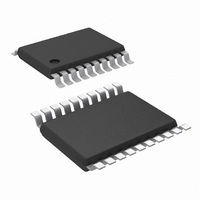LM5118MH/NOPB National Semiconductor, LM5118MH/NOPB Datasheet - Page 21

LM5118MH/NOPB
Manufacturer Part Number
LM5118MH/NOPB
Description
IC CTLR BUCK-BOOST 20-TSSOP
Manufacturer
National Semiconductor
Series
PowerWise®r
Type
Step-Down (Buck), Step-Up (Boost)r
Datasheet
1.LM5118MHXNOPB.pdf
(26 pages)
Specifications of LM5118MH/NOPB
Internal Switch(s)
No
Synchronous Rectifier
Yes
Number Of Outputs
1
Voltage - Output
1.23 ~ 70 V
Frequency - Switching
500kHz
Voltage - Input
3 ~ 75 V
Operating Temperature
-40°C ~ 125°C
Mounting Type
Surface Mount
Package / Case
20-TSSOP Exposed Pad, 20-eTSSOP, 20-HTSSOP
Dc To Dc Converter Type
Step Up/Step Down
Pin Count
20
Input Voltage
3 to 75V
Output Voltage
1.23 to 70V
Output Current
3.5A
Package Type
TSSOP EP
Mounting
Surface Mount
Operating Temperature Classification
Automotive
Operating Temperature (min)
-40C
Operating Temperature (max)
125C
Package
20TSSOP EP
For Use With
LM5118EVAL - BOARD EVALUATION FOR LM5118
Lead Free Status / RoHS Status
Lead free / RoHS Compliant
Current - Output
-
Power - Output
-
Lead Free Status / Rohs Status
Compliant
Other names
LM5118MH
Available stocks
Company
Part Number
Manufacturer
Quantity
Price
Company:
Part Number:
LM5118MH/NOPB
Manufacturer:
ZARLINK
Quantity:
14
The plots shown in Figures 13, 14 and 15 illustrate the gain
and phase diagrams of the design example. The overall band-
width is lower in a buck-boost application due the compen-
sation challenges associated with the right-half-plane zero.
For a pure buck application, the bandwidth could be much
higher. The LM5116 datasheet is a good reference for com-
pensation design of a pure buck mode regulator.
Bias Power Dissipation Reduction
Buck or Buck-boost regulators operating with high input volt-
age can dissipate an appreciable amount of power while
supplying the required bias current of the IC. The VCC regu-
lator must step-down the input voltage VIN to a nominal VCC
level of 7V. The large voltage drop across the VCC regulator
FIGURE 16. VCC Bias from VOUT 4V < VOUT < 15V
FIGURE 15. Overall Loop Gain and Phase
21
translates into high power dissipation in the VCC regulator.
There are several techniques that can significantly reduce this
bias regulator power dissipation. Figures 16 and 17 depict two
methods to bias the IC, one from the output voltage and one
from a separate bias supply. In the first case, the internal VCC
regulator is used to initially bias the VCC pin. After the output
voltage is established, the VCC pin bias current is supplied
through the VCCX pin, which effectively disables the internal
VCC regulator. Any voltage greater than 4.0V can supply
VCC bias through the VCCX pin. However, the voltage ap-
plied to the VCCX pin should never exceed 15V. The voltage
supplied through VCCX must be large enough to drive the
switching MOSFETs into full saturation.
30058550
30058551
www.national.com







